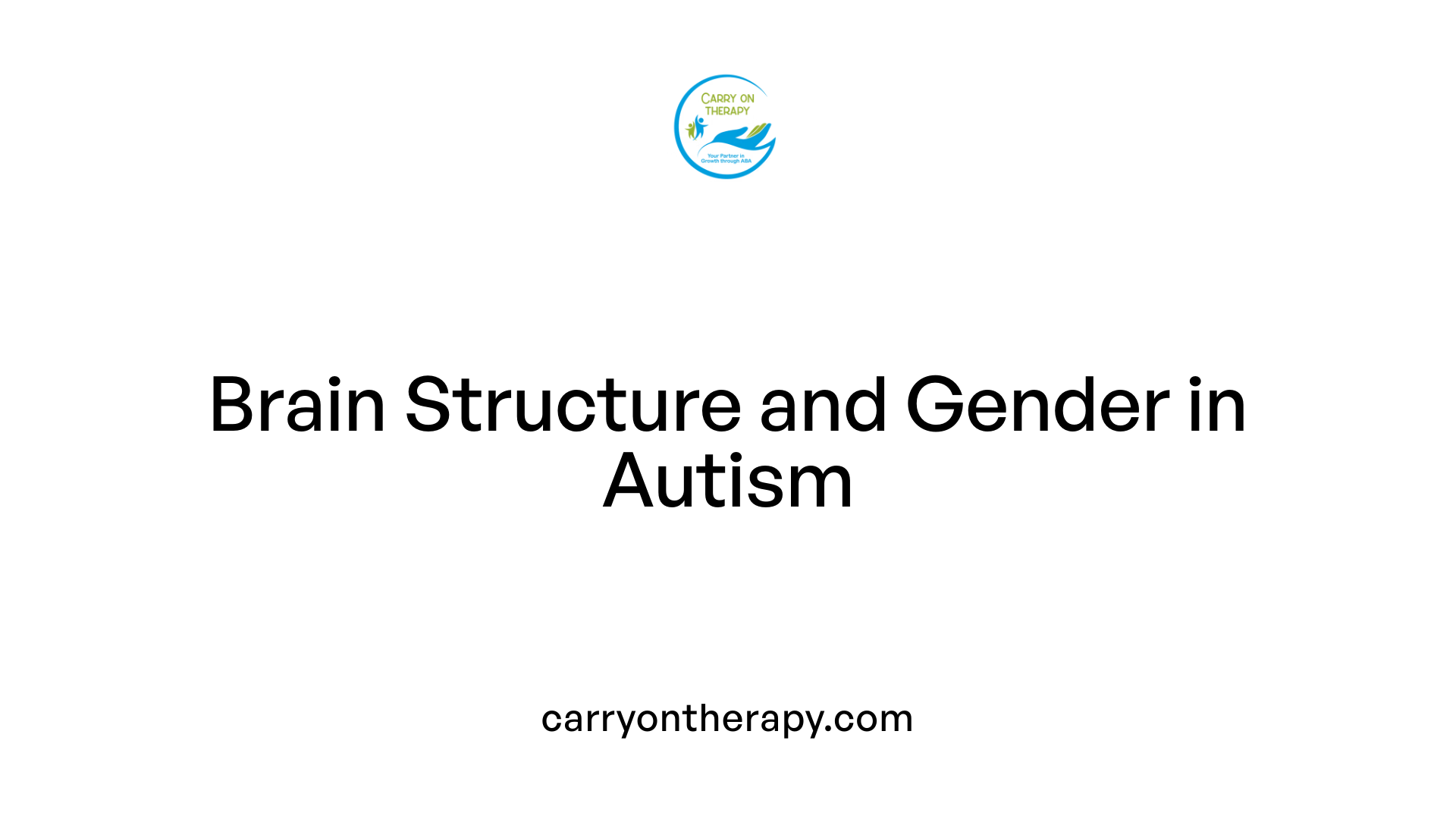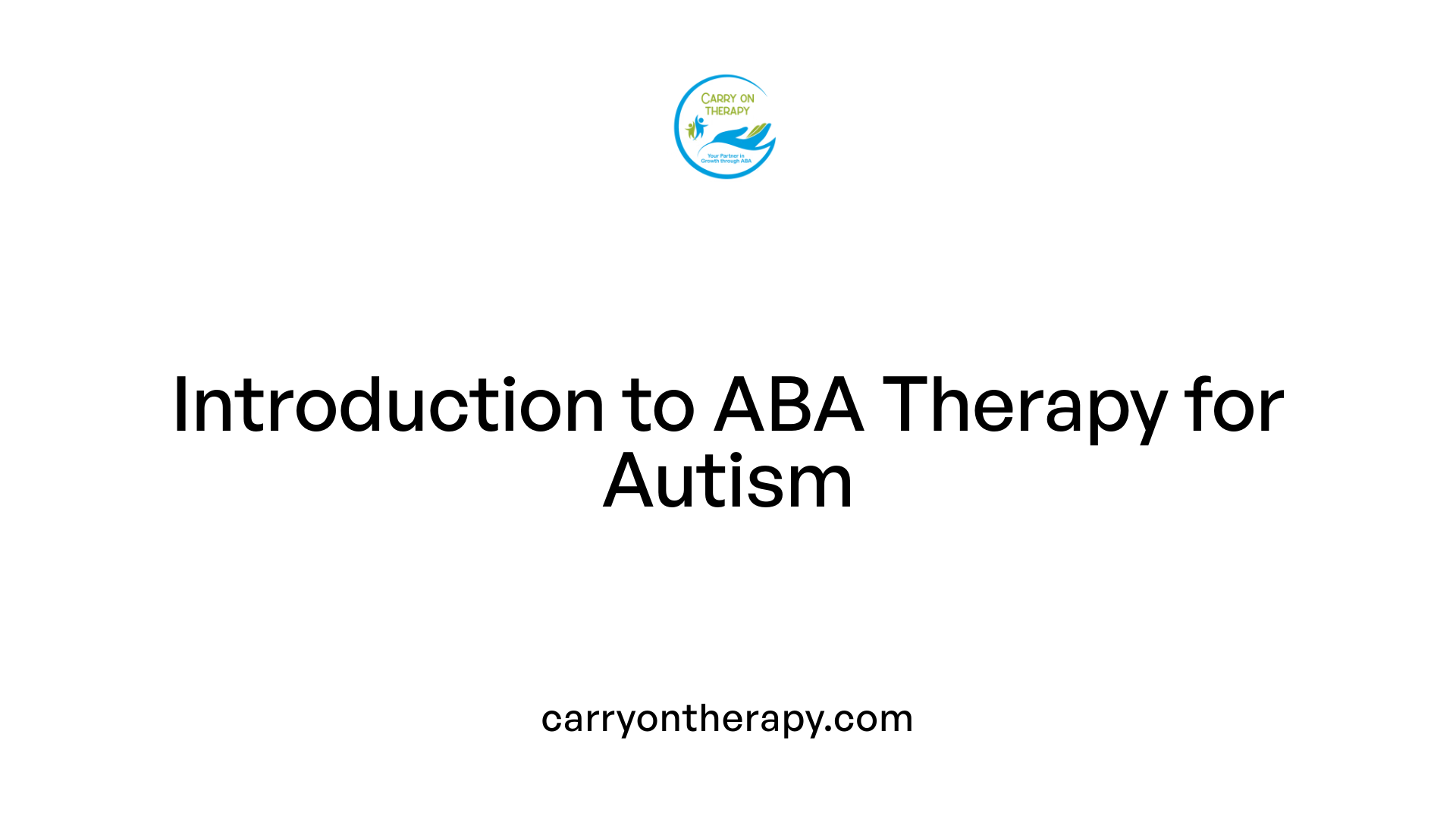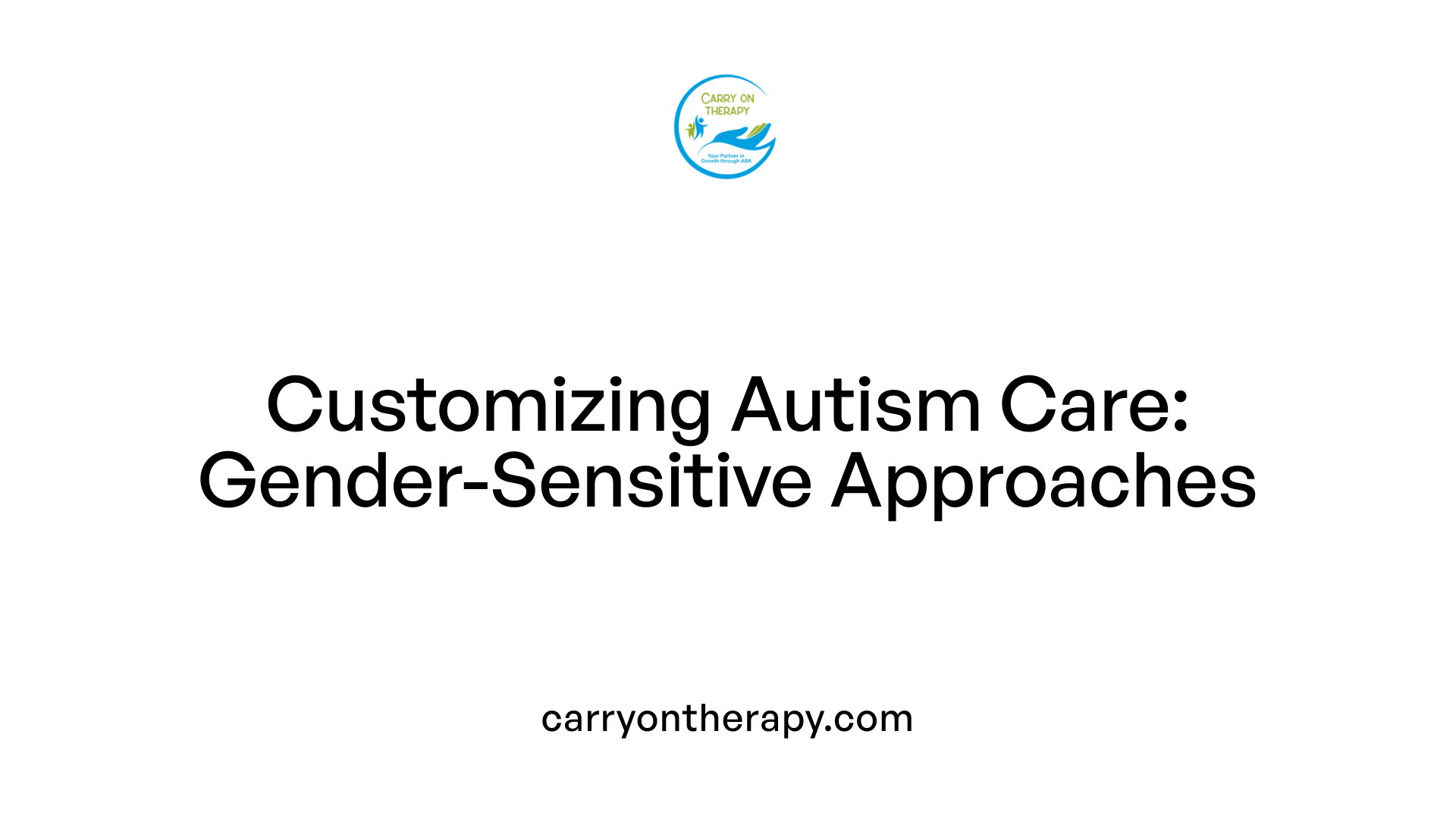Autism In Boys vs. Girls
Exploring Gender Differences in Autism: Understanding Boys and Girls

Introduction to Gender Variations in Autism
Autism spectrum disorder (ASD) presents distinct challenges that differ not only among individuals but also notably between boys and girls. With a prevalence ratio of approximately four boys to every girl diagnosed, understanding these differences is essential for timely diagnosis and effective intervention. Recent research highlights behavioral and neuroanatomical distinctions that influence how autism manifests and is treated across genders. This article delves into these gender-related contrasts, the implications for diagnosis, and the role of Applied Behavior Analysis (ABA) therapy in supporting individuals with autism spectrum disorder.
Behavioral Differences Between Boys and Girls with Autism

Comparison of repetitive and restricted behaviors
Recent studies involving nearly 800 children with autism reveal that girls exhibit fewer repetitive and restricted behaviors compared to boys. While boys often show patterns of hyper-fixations and overt repetitive actions, girls tend to display these behaviors less prominently.
Social behavior and communication similarities
Interestingly, both girls and boys with autism show similar challenges in social behavior and communication. This indicates that despite differences in repetitive behaviors, social difficulties impact both genders to a comparable extent.
Subtle versus overt autism symptoms by gender
Autism symptoms manifest differently across genders. Boys usually present with more visible signs like repetitive play and focused interests, whereas girls often express subtler indicators such as social anxiety and challenges in peer relationships. These subtle traits can make autism harder to recognize in girls, sometimes leading to delayed diagnosis.
Influence of societal norms on behavior interpretation
Societal expectations shape the recognition of autism symptoms. Boys’ repetitive behaviors are often seen as distinctive and prompt early evaluation, while girls’ social difficulties may be masked or dismissed as typical social variations. This discrepancy sometimes results in underdiagnosis or misinterpretation of autism in girls.
How does autism manifest differently in boys and girls?
In summary, boys with autism generally display overt symptoms, including hyper-fixations and repetitive behaviors. Conversely, girls show fewer such behaviors and often exhibit subtle social anxiety or peer interaction challenges. These differences, combined with societal perceptions, influence how and when autism is identified across genders.
Neuroanatomical Factors Underlying Gender Differences in Autism

What neuroanatomical differences exist between boys and girls with autism?
Studies have revealed that children with autism show structural brain differences in areas involved in motor function and planning. Key regions include the motor cortex, supplementary motor area, and cerebellum. These areas play crucial roles in coordinating movement, motor planning, and execution.
Importantly, the patterns of gray matter within these motor-related regions differ between boys and girls with autism. These variations are significant because they align with behavioral differences observed between the sexes, especially regarding repetitive and restricted behaviors.
Research indicates that girls with autism tend to have less pronounced repetitive behaviors, and this corresponds to distinct gray matter patterns in the brain compared to boys. This connection between brain structure and behavior helps explain why autism symptoms can manifest differently in girls versus boys.
Understanding these neuroanatomical differences provides a biological framework supporting tailored approaches in diagnosis and treatment, recognizing that gender influences the neurological and behavioral presentation of autism.
Challenges in Diagnosing Autism in Girls

Why are girls with autism often diagnosed later than boys?
Girls with autism are frequently diagnosed later than boys due to the subtler manifestation of symptoms. Research shows that girls tend to display fewer repetitive and restricted behaviors compared to boys, which are often key markers clinicians look for. This subtlety in symptoms makes it harder to identify autism early in girls.
Diagnostic tools have historically been developed based on male presentations of autism. As a result, these tools may overlook female-specific behaviors, contributing to underdiagnosis or misdiagnosis in girls. Girls often exhibit behavioral masking, meaning they consciously or unconsciously hide their autistic traits to fit in socially. This masking further complicates accurate diagnosis.
Societal expectations also play a role. Boys’ more overt autistic behaviors like hyper-fixations are often recognized quickly, whereas girls’ behaviors, such as social anxiety and challenges in maintaining friendships, may be seen as typical developmental issues rather than signs of autism. These social norms delay the identification of autism in girls.
Early indicators differ by gender: boys might show pronounced repetitive behaviors and specific interests early on, while girls may instead present subtle social difficulties. Recognizing these differing patterns is essential for timely and accurate diagnosis.
Overview of Applied Behavior Analysis (ABA) Therapy for Autism

What is Applied Behavior Analysis (ABA) therapy and how is it used to support individuals with autism?
Applied Behavior Analysis (ABA) therapy is a scientifically supported method that uses principles of learning and behavior to assist individuals with autism in developing new skills and reducing challenging behaviors. It involves a thorough assessment of each person’s unique needs to create personalized treatment plans.
Techniques such as positive reinforcement encourage desired behaviors, while prompting and naturalistic teaching methods — including Pivotal Response Treatment — help generalize skills to real-world settings. ABA targets areas like communication, social skills, self-care, and academics through structured, evidence-based approaches delivered intensively and early, which leads to significant developmental improvements.
Who typically provides ABA therapy and what qualifications do these professionals need?
ABA therapy is delivered by trained experts, including Board Certified Behavior Analysts (BCBAs), Registered Behavior Technicians (RBTs), therapists, and other specialists trained in autism interventions.
BCBAs usually hold advanced degrees in behavior analysis or related fields, complete supervised practical experience, and pass certification exams. RBTs undergo specialized training and competency evaluations. These professionals work closely with families to customize interventions and promote consistent practice of skills across home, school, and community settings.
Techniques and approaches in ABA therapy
- Positive reinforcement: Rewarding positive behaviors to increase their frequency.
- Prompting: Providing cues or assistance to encourage correct responses.
- Naturalistic teaching: Embedding learning opportunities in everyday activities to enhance engagement.
Importance of individualized treatment plans and parental involvement
Each ABA program is tailored to the individual's behavioral profile, emphasizing targeted goals. Parental participation is crucial to reinforce strategies beyond therapy sessions, ensuring that skills are practiced consistently in various environments. This collaboration enhances the effectiveness and generalization of learned behaviors.
Techniques and Strategies Used in ABA Therapy

What are some of the common techniques used in ABA therapy to promote learning and development?
ABA therapy uses various structured methods to support learning and behavioral growth. One foundational technique is discrete trial training (DTT), which involves breaking skills into small, manageable steps taught through repeated, clear instructions. Modeling is another approach where therapists demonstrate an action, encouraging the individual to imitate it.
Prompting and fading strategies are essential for guiding learners. Prompts provide cues or assistance to perform a task, which are then gradually faded to promote independence.
Reinforcement plays a major role; positive reinforcement rewards desirable behaviors to increase their occurrence, while behavior chaining connects small steps into a complex skill sequence.
Functional behavior assessments identify reasons behind challenging behaviors, guiding targeted interventions to teach alternative, appropriate behaviors.
Additional strategies include visual modeling to enhance understanding, behavior contracts to set clear expectations, redirection to shift attention from problem behaviors, and script fading to support social skill development. These combined methods create a personalized, supportive therapy environment that optimizes learning opportunities.
ABA’s diverse techniques are designed to account for individual differences, making it adaptable to the distinct needs of children, including variations seen between girls and boys with autism.
Effectiveness of ABA Therapy Across Genders

What evidence exists regarding the effectiveness of ABA therapy for individuals with autism?
Applied Behavior Analysis (ABA) therapy is widely recognized as the gold standard treatment for autism spectrum disorder (ASD). Numerous studies, including randomized control trials and meta-analyses, have confirmed its effectiveness in improving social skills, communication, adaptive behaviors, and in reducing challenging behaviors.
Outcomes in boys versus girls with autism
Research indicates that ABA therapy produces comparable treatment outcomes for both boys and girls with autism. A multi-timepoint study found no significant gender differences in response to ABA intervention, indicating that the therapy is equally beneficial across genders. Despite boys being diagnosed more frequently and earlier due to more visible symptoms, girls respond similarly well to ABA despite often having subtler behavioral presentations.
Importance of individualized rather than gender-based therapy
Given the variability in autism symptoms within and between genders, experts advocate for personalized treatment plans tailored to each individual's specific needs rather than relying on gender as a determining factor. Therapy should focus on unique behavioral challenges and strengths to maximize benefit.
Limitations in research regarding gender differences
The current body of research on gender differences in ABA outcomes is limited and complicated by small female sample sizes and diagnostic biases. Additionally, wide confidence intervals in some studies suggest statistical uncertainty, highlighting the need for more extensive research to clarify subtle gender-related differences. This underlines the ongoing importance of considering individual variability rather than gender alone when planning interventions.
Implications for Diagnosis and Treatment: Toward Personalized Interventions

How should diagnosis and treatment approaches be adapted for autistic girls versus boys?
Autistic girls often display subtler signs than boys, such as less repetitive behavior and more social anxiety. Because traditional diagnostic tools have focused primarily on males, this can lead to underdiagnosis or delayed recognition in girls. Clinicians should therefore use gender-sensitive assessments that recognize these behavioral nuances.
Need for gender-sensitive diagnostic practices
Girls with autism may mask symptoms more effectively, making their condition less visible. Diagnostic criteria should be expanded or refined to capture these less overt, yet impactful, behaviors. This ensures early identification, which is crucial for timely intervention.
Tailoring ABA therapy to reflect individual profiles
Applied Behavior Analysis (ABA) therapy remains the gold standard for autism treatment and shows comparable effectiveness across genders. However, therapy must be personalized to address each child's unique behavioral profile, focusing on strengths and challenges rather than gender alone. Individualized plans help optimize outcomes regardless of sex.
Role of early intervention and family involvement
Early detection allows for more effective behavioral interventions. Active family participation in ABA therapy fosters skill generalization and provides supportive environments across settings. This collaborative approach enhances treatment gains, especially in managing social and communicative skills.
Addressing underrepresentation of girls in autism research
Females are significantly underrepresented in autism studies, limiting understanding of their distinct needs. Increasing research focused on girls can improve diagnostic accuracy and tailor interventions more effectively, promoting equitable care.
In summary, a shift toward personalized, gender-sensitive diagnosis and treatment—supported by early intervention and family engagement—holds promise for better addressing the diverse expressions of autism in girls and boys.
Conclusion: Embracing Gender Differences to Enhance Autism Support
Recognizing the distinct ways autism presents in boys and girls is key to improving diagnostic accuracy and treatment effectiveness. While boys often display more overt behaviors that facilitate earlier detection, girls’ subtler symptoms necessitate more sensitive and tailored approaches. Applied Behavior Analysis (ABA) therapy remains a highly effective intervention across genders, with an emphasis on individualized treatment plans that consider unique behavioral and neuroanatomical profiles. Continuing research, heightened clinical awareness, and commitment to personalized strategies will ensure that all individuals with autism receive the support they need to thrive, no matter their gender.
References
- Girls and boys with autism differ in behavior, brain structure
- Autism Presentation and Diagnosis in Boys VS Girls
- Comparative Effects of Applied Behavior Analysis on Male ...
- Who Qualifies for ABA Therapy: Eligibility Guide
- Applied Behavior Analysis (ABA)
- ABA Techniques: Strategies for Behavior Analysts - GSEP Blog
- Applied Behavior Analysis (ABA)
- 10 Common ABA Therapy Techniques
- The effectiveness of applied behavior analysis program ...
- Statement on Use of Applied Behavior Analysis (ABA) for ...







